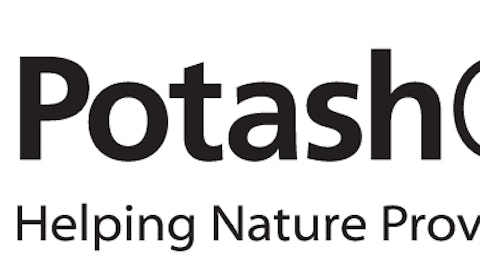Most basic industries stocks have fallen severely over the past few months due to the slump in commodity prices and the strength of the U.S dollar versus other currencies. However, this fall can be seen as a blessing in disguise for dividend investors, as the low valuations at which most basic industries stocks trade at right now has sent their annual dividend yields soaring. Although one can argue that dividend payouts from companies are not a reliable metric, as they can change at any time, the thing that makes the basic industries sector more bankable than most other sectors in this regard is that most of the companies in this category have a history of consistently paying dividends, even in times of uncertainty. Like any seasoned investor will know, figuring out sectors that have the potential to outperform the overall market is perhaps the easier part of the job. The real trouble starts when one has to identify individual companies in that sector to invest in, identifying the possible winners from the losers. That’s where we at Insider Monkey attempt to help our readers make the right choices, by revealing to them the stocks in which the smart money is flowing into or out of. After going through the latest 13F filings of the over 700 hedge funds that we cover, we have identified their five favorite stocks with a dividend yield of at least 5% in the basic industries sector, as of June 30. Read on to find out which stocks made the list.

Most investors don’t understand hedge funds and indicators that are based on hedge funds’ activities. They ignore hedge funds because of their recent poor performance in the bull market. Our research indicates that hedge funds underperformed because they aren’t 100% long. Hedge fund fees are also very large compared to the returns generated and they reduce the net returns experienced by investors. We uncovered that hedge funds’ long positions actually outperformed the market. For instance the 15 most popular small-cap stocks among funds beat the S&P 500 Index by more than 60 percentage points since the end of August 2012. These stocks returned a cumulative of 118% vs. 57.6% gain for the S&P 500 Index (read the details). That’s why we believe investors should pay attention to what hedge funds are buying (rather than what their net returns are).
5. Rio Tinto plc (ADR)(NYSE:RIO)
Investors with Long Positions (as of June 30): 18
Aggregate Value of Investors’ Holdings (as of June 30): $241.11 Million
United Kingdom-based mining behemoth Rio Tinto plc (ADR)(NYSE:RIO) has been one of the worst sufferers of the decline in commodity prices this year, with its shares trading down by 27% year-to-date. The company currently pays a half-yearly dividend of $1.075, which translates into an annual dividend yield of 6.3%. During the second quarter, hedge funds’ ownership of the stock climbed by two, however, the aggregate value of investors’ holdings in the company declined by $80.6 million. On August 21, analysts at Axiom Securities initiated coverage on the stock with a ‘Neutral’ rating and a $26 price target, which represents a potential 23.5% downside to the stock’s current price. Among the funds tracked by us, Billionaire David E. Shaw‘s firm D.E. Shaw was the largest shareholder of Rio Tinto plc (ADR)(NYSE:RIO) at the end of June, owning 764,114 shares.
4. BHP Billiton Limited (ADR)(NYSE:BHP)
Investors with Long Positions (as of June 30): 19
Aggregate Value of Investors’ Holdings (as of June 30): $146.05 Million
Even though it was down by 12.4% in the second quarter, the number of hedge funds that counted BHP Billiton Limited (ADR)(NYSE:BHP) as one of their investments increased from 17 at the end of March. However, the aggregate value of hedge funds’ holdings in it were more than halved during the quarter. BHP Billiton Limited (ADR)(NYSE:BHP) currently pays a semi-annual dividend of $1.24, which currently represents a dividend yield of about 7.4%. One of the biggest hedge funds in the world, Ken Griffin‘s Citadel Investment Group, increased its stake in the company by 272% to 586,128 shares during the April-June period.




